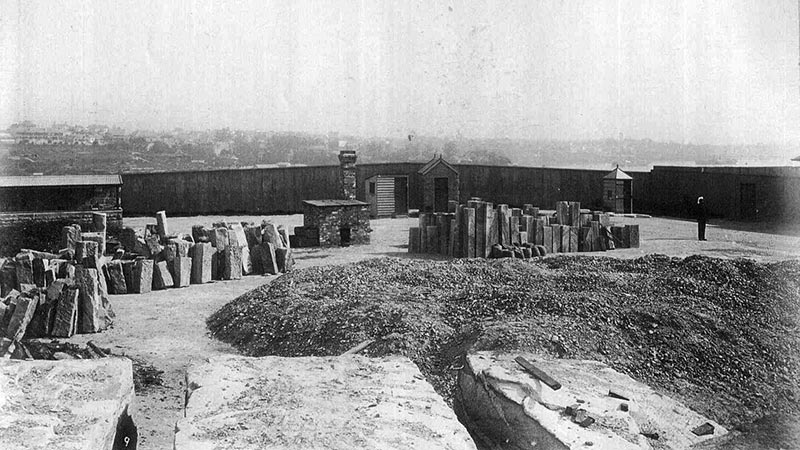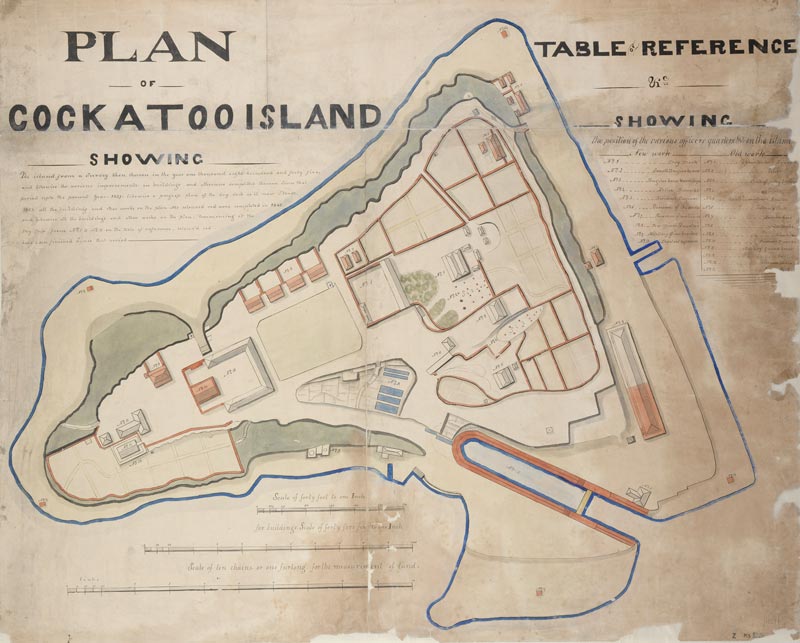In 1839 the proposed return of convicts from Norfolk Island and the mounting number of prisoners sentenced locally induced New South Wales Governor Gipps to create further accommodation for convicts in Sydney. With Colonial Office endorsement and imperial funding he chose to construct a new penal establishment on Cockatoo Island. Gipps noted that it was isolated by water but capable of ready supervision from Sydney.

The convict gangs had finished their work on the massive Goat Island gunpowder magazine and Gipps had them and their mobile boxes and tents transferred to Cockatoo where, during the 1840s, they erected a permanent settlement out of the island sandstone. Royal Engineers provided design and supervision, and the Superintendent of Convicts was responsible for penal discipline. The Army provided a military guard. It was a tripartite arrangement that resulted in extended squabbling over demarcation and status.

In the 1860s the colonial Prisons Department was responsible for the establishment and regarded its structures as so old-fashioned that they were not susceptible to any form of adaption and a characteristic planner’s blight settled over the upper part of the island. Its future as a prison was uncertain. Finally, in 1869, the Executive Council approved the termination of the establishment and the transfer of the prisoners to Darlinghurst.
Administrators abhor a vacuum and when riots broke out in the Newcastle Reformatory for Girls under the age of 16, the government decided to transfer the girls to the empty buildings on Cockatoo Island. There its isolated position would afford ‘greater facilities for controlling the inmates’ and they would be divorced from ‘idle and vicious’ contacts at Newcastle. Supervision at Cockatoo did not prove to be much better than at Newcastle and the goings on at Cockatoo can be read in the Reports of the Commissions appointed
Cockatoo Island, Sydney, 1983 to inquire into… the working and management of the public charities of the Colony during the 1870s.
In 1871, a training ship for boys, NSS Vernon, was anchored off the north-east corner of the island. It was under the control of the Department of Public Instruction. In the 1880s the boys were given a recreation area on the north-eastern coast of the island and in 1890 Vernon was replaced by Sobraon. Sobraon remained in place until 1911.

After the departure of the girls, the establishment was again proclaimed a prison. The Comptroller General of Prisons noted that the reopening of dormitory accommodation such as that on the island would have been indefensible had it not been for existing overcrowding and the government’s failure to authorise a metropolitan penitentiary. However, he said, ‘as the class to be imprisoned there will be restricted to the habitual vagrants and petty offenders, for whom improvement and suppression are alike impossible, the evil will be more seeming than real’.
The prison remained in occupation until the jail at Long Bay was opened in 1909.